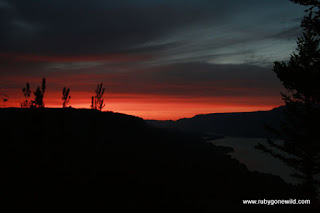Baleen.
Once a year, usually during the spring migration, my parents would take us to a high cliff edge on the Oregon coast to stand in the wind and rain of late winter and squint into the horizon looking for migrating Gray Whales. This is a task not unlike to searching for a needle in a haystack. The ocean is big, the whales comparatively small, and it is hard to picture what exactly it is that you are looking for. Whale watching from shore generally consists of setting up on a bench with a blanket, a thermos of hot tea, and a pair of binoculars, and waiting. Like other kinds of fishing, this can go on for some time. Until someone sees a spout. Then there is an eruption of activity, a bustling. Pairs and family groups all gather and point themselves in the direction of the sighter and beginning the difficult task of explaining where something was, just a moment ago, in the ocean. If you are luck they are traveling in a tight pod, breathing often, and swimming fairly close to shore, if you are unlucky, you may always be looking someplace else the moment they rise up, always turning your gaze just a moment too late.
In recent years I have taken this pilgrimage upon myself, finding secluded perches where I can watch and wait in solitude. That I would see the whales was something I took for granted, sure that enough waiting and the right intentions would always produce them. This year, I brought a friend that had never been out to see the whales. I had not seen her in some time, she has been struggling with sadness. On the drive I was animated, describing how they travel along shore, in groups, sending up long streams of water, their backs and tails rising up out of the water. I told her stories about whale watching as a kid, as an adult, folding it into a personal lore, wanting her to be excited, as though seeing the whales would be some kind of hope, a symbols of something good and powerful to come.
And then, nothing. For hours, all we watched was the glassy blue of the ocean on a calm and sunny day. Eventually, we turned and headed home, deflated. Life does not always give us what we want and sometimes we have to look inside ourselves for our totems, our signs of hope. Maybe next year.
Resources/References:
National Geographic Website on Gray Whales
Photo Courtesy of:

.jpg)






